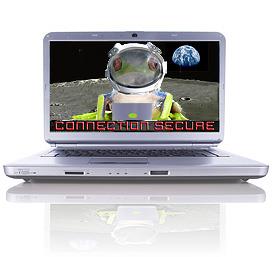By now, logging into the company computer system from the road, airport, hotel, family room, beach (sad but sometimes true) or any location is normal for many of us. “Remote access” technology is so common, in fact, that it’s easy to forget something really important: it provides a portal into the very heart of your organization.
As hackers become more sophisticated at sneaking into these portals, you need to become more sophisticated at keeping them out.
Here are nine things your company can do to benefit from all of the cool things remote access lets you do — like being more productive, efficient and green — without the anxiety of wondering where your data may end up.
1. Be fully armed, IT-style, by using a combination of tactics that make it hard to log into your system. The easier it is for your team to log in, the easier it is for bad guys (and competitors) to log in, too.
2. Choose remote access software that uses three-factor authentication:
- Something you are: username.
- Something you know: password.
- Something you have: this may be a company-supplied computer, a security token (such as a key fob with a password stored on it) or biometric data (like software that recognizes your scanned fingerprint when used on a scanner-equipped laptop).
3. Don’t use free remote access software like LogMeIn or low-end services like GoToMyPC – unless you have nothing to lose, that is. When these service providers say that they’re secure, they mean your session is secure because it’s encrypted. But they have no idea who’s logging into the system.
4. Understand your system will need good software and also some hardware to make remote access truly safe.
5. Use “thin client” (server) business solutions from a reputable provider like AEP Networks, Citrix or Juniper Networks.
6. Use laptops with LoJack installed. LoJack software can disable the computer if it’s stolen and some versions can also trace its location just like LoJack on cars. According to Fast Company magazine, a laptop is stolen every 53 seconds and more than 12,000 disappear weekly from U.S. airports alone.
7. Don’t store usernames and passwords on computers, phones or handhelds. Ever.
8. Determine which of your staff truly needs remote access.
9. Have clear, written policies so that everyone knows what’s expected of them when accessing the network and working offsite. Sometimes the simplest instructions can save the day and keep everyone hopping along.

